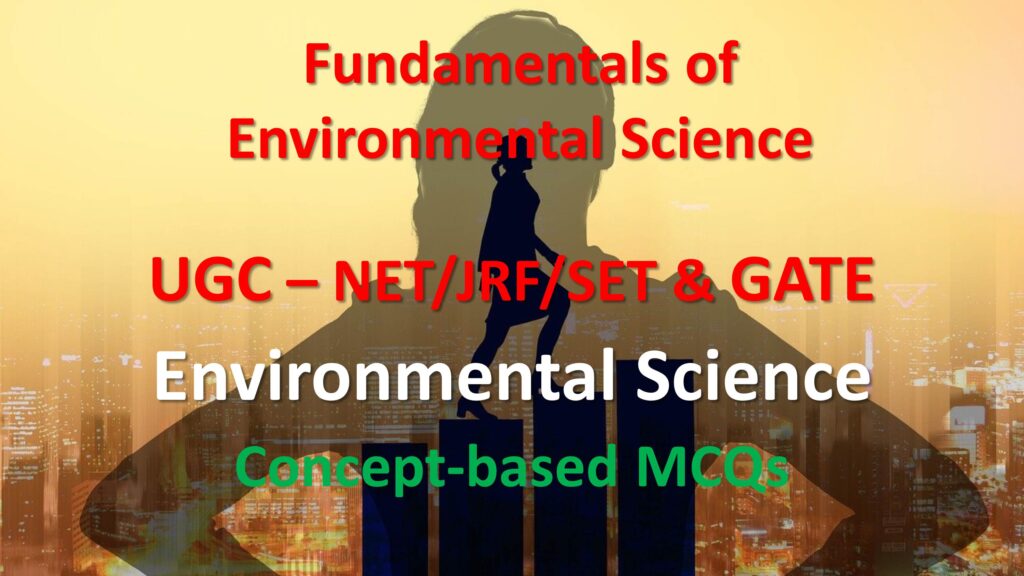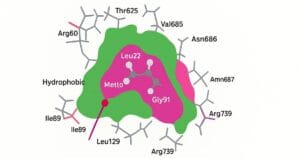
Welcome to the COMPETITIVE EXAM MCQs SERIES of ENVIRONMENTAL SCIENCE for UGC-NET/JRF, GATE, and other entrance tests.
Fundamentals of Environmental Sciences is a comprehensive introduction to basic principles, concepts, and components of environmental science. It forms the foundation for understanding the interdisciplinary nature of environmental studies. Therefore it is an essential topic for competitive examinations.
Syllabus Outline
- Structure and Composition of the Atmosphere
- Laws of thermodynamics
- Meteorological parameters
- Interaction between Earth, Humans and Environment
- Resources and their assessment
- Bio-geographic provinces of the world
- Agro-climatic zones of India
- Principles of Remote Sensing and GIS
- Environmental education and awareness
- Environmental ethics
- Concept of sustainable development
This quiz contains the concept-based most frequently asked 25 MCQs of “Fundamentals of Environmental Science“. Each question has a single correct/most appropriate answer.
1. An area in the environment where living things can grow and survive is termed as_______.
a) Ecosystem
b) Environment
c) Habitat
d) Niche
2. Which of the following is not associated with population growth?
a) Environmental pollution
b) Volcanic eruption
c) Increased resource consumption
d) Food and energy shortages
3. What is the term for balancing the need to use resources while conserving them for the future?
a) Sustainable development
b) Resource development
c) Resource conservation
d) Human resource development
4. Energy transfer and nutrient flow through various trophic levels can be described as
a) Cyclic only
b) Cyclic and linear respectively
c) Linear and cyclic respectively
d) Linear only
5. Which of the following natural resources is productive?
a) Fossil Fuel
b) Uranium
c) Coal
d) Soil
6. Which of the following has a higher impact on air pollution?
a) Sewage
b) Loudspeakers
c) Transportation
d) Fertilizers
7. Which layer of the atmosphere contains the maximum amount of Ozone?
a) Mesosphere
b) Stratosphere
c) Troposphere
d) Thermosphere
8. Greenhouse gases are effective in absorbing______.
a) Microwave
b) Ultraviolet
c) Infrared
d) Visible
9. _________ is a quantified measure of the relative effect of greenhouse gases on the radiative forcing of the atmosphere, including both direct and indirect effects relative to carbon dioxide.
a) Global Warming Potential
b) Human Development Index
c) Global Warming Index
d) Human Development Potential
10. Biodiversity: (I) Increases towards the Arctic region (II) Decreases towards the Arctic region (III) Increases towards the equator (IV) Decreases towards the equator Choose the correct code:
a) (I) and (II)
b) (I) and (III)
c) (II) and (III)
d) (I) and (IV)
11. Incomplete combustion of fossil fuel in your vehicle may increase the emission of _______.
a) Carbon monoxide
b) Carbon dioxide
c) Ozone
d) UV rays
12. The atmosphere contains various layers each having a characteristic composition. The correct sequence starting from the earth’s surface is:
a) Stratosphere – Troposphere – Mesosphere – Thermosphere
b) Mesosphere – Stratosphere – Thermosphere – Troposphere
c) Stratosphere – Mesosphere – Troposphere – Thermosphere
d) Troposphere – Stratosphere – Mesosphere – Thermosphere
13. A food web consists of_______________.
a) An organism’s position in a food chain
b) A set of similar consumers
c) Interlocking food chains
d) A portion of the food chain
14. Sustainable development can be thought of in terms of three spheres i.e.
a) Environment, Ecology and Society
b) Environment, Economy and Ecology
c) Environment, Economy and Equity
d) Environment, Economy and Society
15. Which of the following pollution is emerging in India?
a) Water pollution
b) Noise pollution
c) E-waste and radiation hazards pollution
d) Air pollution
16. Which indicators are not included in the Human Development Index calculation?
a) Increased longevity
b) An enhancement of income
c) An increase in knowledge
d) Environmental growth
17. An ecological footprint is measured in Global Hectare which includes?
a) Area required to produce resources to support life per capita
b) Area required to produce resources to support life and to recycle/dispose of waste generated per capita
c) Area required to recycle/dispose of waste generated per capita
d) Total geographical area available per capita
18. ______ layers of Earth’s Atmosphere are marked by a decrease in temperature with an increase in elevation.
a) Troposphere and Mesosphere
b) Mesosphere and Ionosphere
c) Troposphere and Stratosphere
d) Stratosphere and Mesosphere
19. Which air pollutant is a major concern in the urban area?
a) Ozone
b) SOx
c) Carbon dioxide
d) Particulate Matter (PM)
20. Forestry outside the conventional forests which primarily aims at providing a continuous flow of goods and services for the benefit of people is called?
a) Social Forestry
b) Farm Forestry
c) Community forestry
d) Extension forestry
21. “Green House Effect” means:
a) Global warming
b) Trapping of outgoing infrared radiation by GHG present in the atmosphere
c) Cultivation of crops in a greenhouse in a cold climate
d) Increase in earth’s mean temperature due to atmospheric pollution
22. In a close ecosystem, across its boundaries:
a) Both energy and mass cannot transfer
b) Mass can transfer but energy cannot transfer
c) Energy can transfer but mass cannot transfer
d) Both energy and mass can transfer
23. One of the best solutions to get rid of non-biodegradable waste is
a) Recycling
b) Burning
c) Burying
d) Dumping
24. _________for a given region is the maximum number of individuals of a given species that an area’s resources can sustain indefinitely without significantly depleting or degrading those resources.
a) Carrying capacity
b) Population
c) Eco-Loadmax
d) Sustainable development
25. Which among the following surfaces has maximum albedo?
a) Dark asphalt
b) Dry sand
c) Leafy crops
d) Calm seawater
Next: Structure and Composition of the Atmosphere
References
- Richard T. Wright and Dorothy F. Boorse (2017) Environmental Science: Toward a Sustainable Future, Pearson, 13th edition
- Eldon D. Enger and Bradley F. Smith (2015) Environmental Science: A Study of Interrelationships, McGraw-Hill Education, 13th edition
- Anil K. Tyagi (2018) Environmental Science and Engineering, Khanna Publishers, 3rd edition

